No products in the cart.
The Last Mail Flight
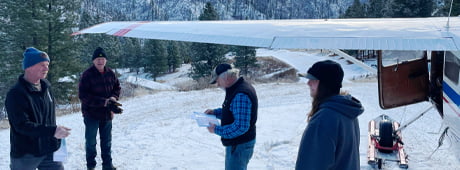
A Backcountry Tradition Ends
Story and Photos by Richard H. Holm, Jr.
The high-pitched sound of Mike Dorris’s ski-equipped Cessna 185 bound for Warren and various remote ranches along the South Fork of the Salmon River reverberates through the wintry skies of McCall on January 19, 2023. Mike, age sixty-eight, is the owner of Sawtooth Flying Service based in McCall and Stanley, and this is his last aerial mail delivery, a route he has flown for forty-two years.
To help celebrate the bittersweet event, he has invited me to ride along. His daughter Katie, who is a third-generation commercial backcountry pilot for the family-owned company, has joined us to fly some of the legs and share in the special occasion. As we climb upward from the McCall Municipal Airport, a band of low-lying clouds and isolated snow squalls quickly dictates a zigzag flight path. Within twenty minutes, we’re just north of Steamboat Summit, where Katie starts a gentle descent to our first stop: the historic mining town of Warren. Katie follows the jumbled terrain as she guides the plane downward, even as she begins pumping the skis down past the wheels in preparation for landing on the narrow, snow-covered runway.
“Now be sure to count all seventy-three strokes, so we know the wheels are where we want them,” Mike coaches from the right seat. With the runway in sight, he casually asks, “What’s the wind doing down there?” All three of us crane our necks to find and read the windsock below.
I’ve flown a few hundred hours with Mike over the past fifteen years and can say there is likely no one more knowledgeable when it comes to flying the backcountry of central Idaho. He has landed at Warren and departed from there several thousand times in all seasons and all conditions. When he is willing to share a tip, you listen.
“Yep, my rule of thumb here when on skis is no more than five knots of crosswind,” he says as we look out the windows. “The sock is fairly accurate for wind up and down the runway, but not for crosswind. The wind in this valley will bounce in here from side to side. But hey, today looks like a half-sock tailwind for landing. We’ll take that.”
Katie nods and then motions to a point low on the horizon. “You want me to stay to the inside of that ridge, right?” She knows the answer but just wants a bit of confirmation. Another Mike Dorris tip concerning Warren: don’t cross the ridge off the northeastern end of the runway. If wind is whirling in the valley, it will rotor there and cause turbulent air. To acknowledge his daughter, he just smiles, as any proud father would.
Katie double-checks everything and steers the plane onto “short final” (lined up with the runway for landing) and sets it down smoothly. The “kid,” as Mike sometimes calls her, can fly an airplane. Once the plane comes to a stop and the propeller blades stop spinning, several snowmobiles descend upon us, trailing a haze of blue smoke that rises into the high mountain air. A longtime backcountry resident once told me that mail day is their Sunday. A handful of “full-timers” surround the plane and Mike starts calling out names and handing out mail. Many comment on how much they are going to miss him and his service, and a few sorrowful hugs are exchanged. Mike and Katie reassure them they will return to visit as tourists and to call anytime they need something—after all, they’re not retiring from flying.
Mike’s mail contract traces back to a late-1800s ground route that was converted in the 1950s to an unofficial air route by McCall resident and longtime backcountry pilot Bob Fogg, who flew for Johnson Flying Service. The route was driven three times per week in the early years when the road over Secesh Summit was open, typically from late-May to mid-November, but when snows blocked the road, the route was flown. Fogg’s original route was from McCall to Warren, where the mail was then sorted again at the little Warren Post Office and carried by ground over Warren Summit in various ways to destinations on the South Fork of the Salmon River. In 1976, Fogg retired from flying and he died two years later.
From left, Katie, Mike, Wes, and Aubrey at South Fork Ranch.
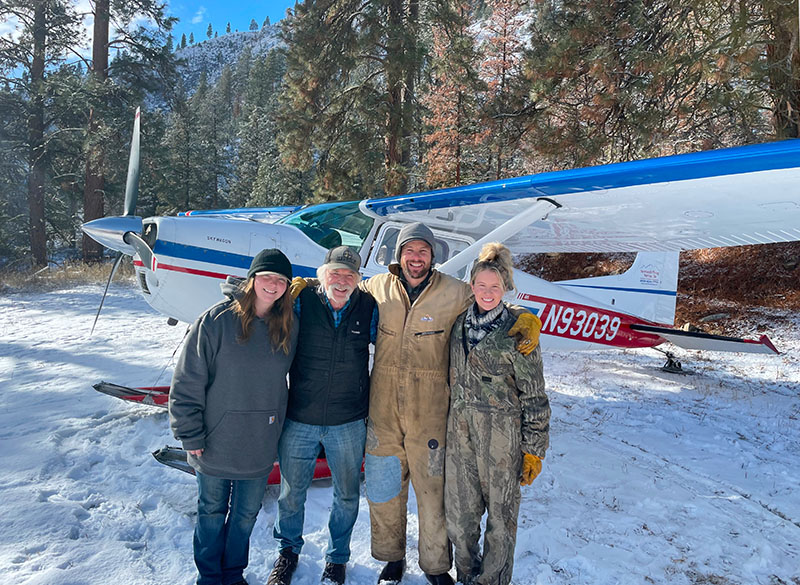
Mike lands at McClain Ranch.
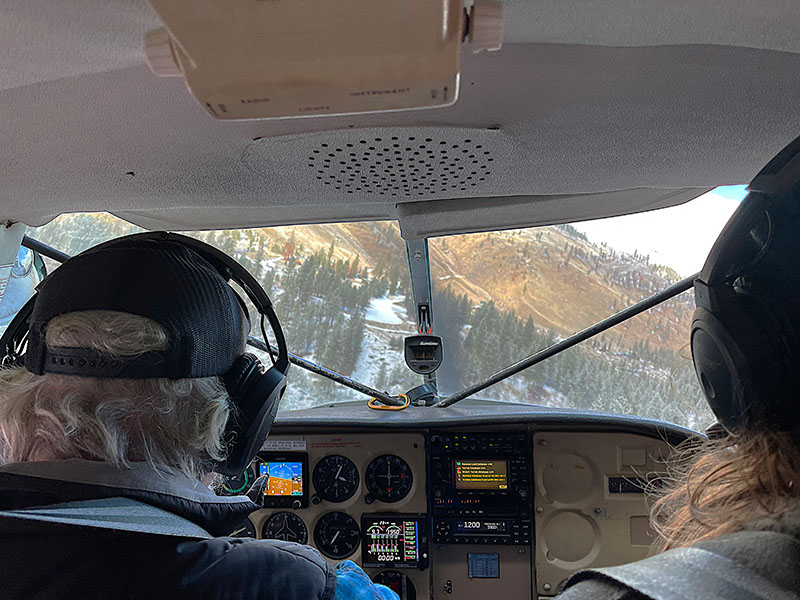
Mike hands out mail at McClain Ranch.
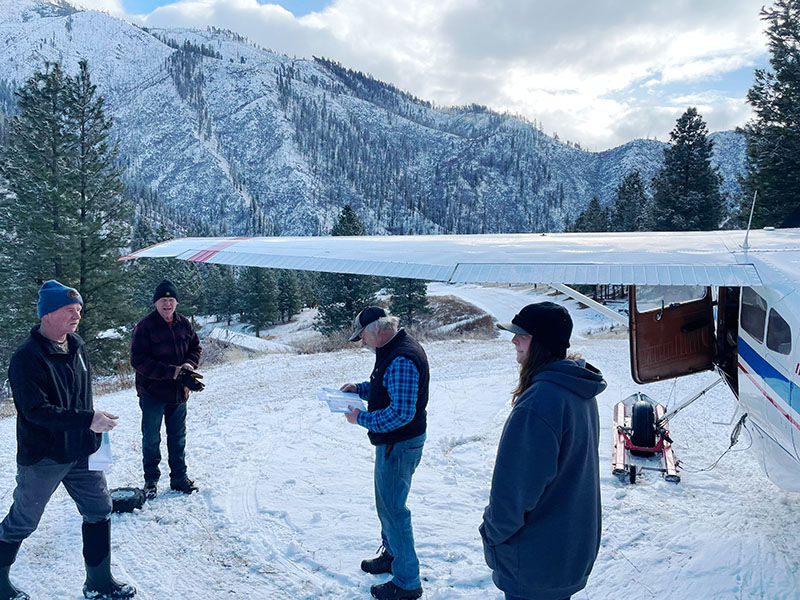
The Cessna 185 at McClain Ranch Airstrip on the last mail flight.
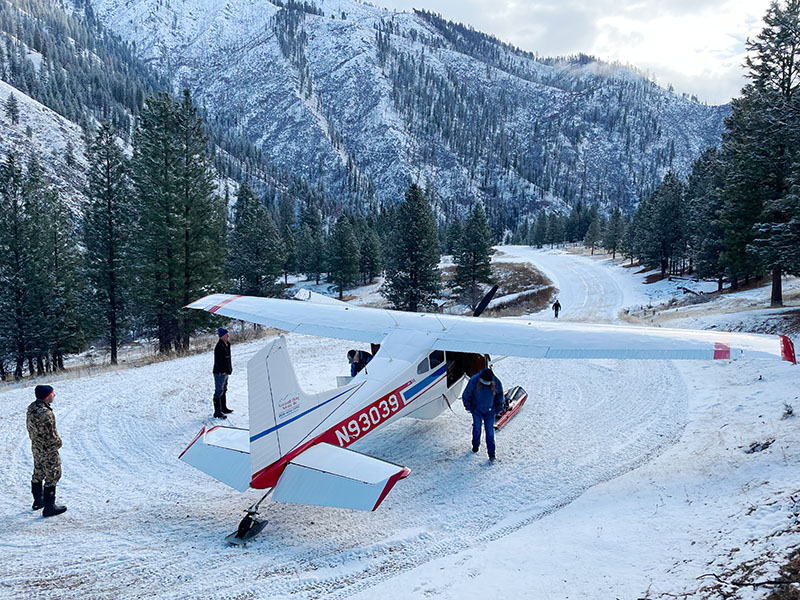
Warren residents greet Mike and Katie.
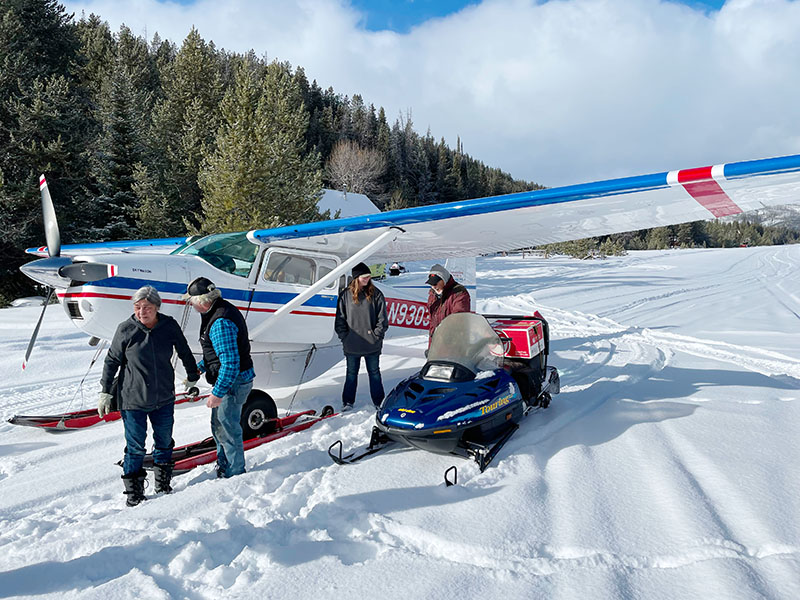
View of South Fork Salmon River to McClain Ranch.
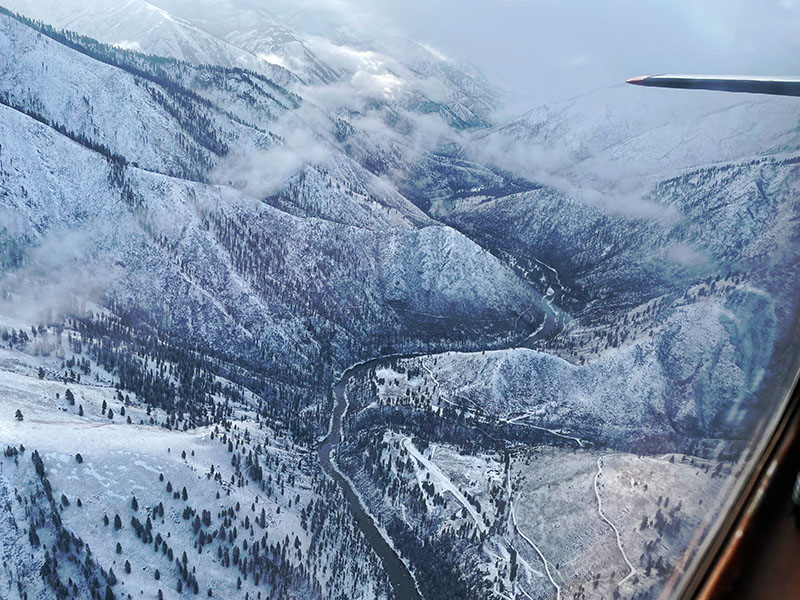
Looking down on South Fork Ranch.
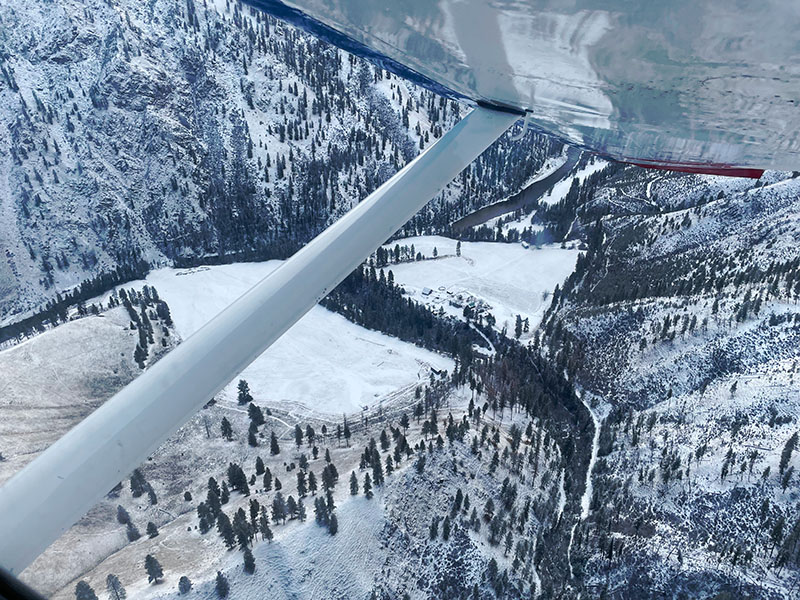
Marquita Blanton. Mike Dorris photo.
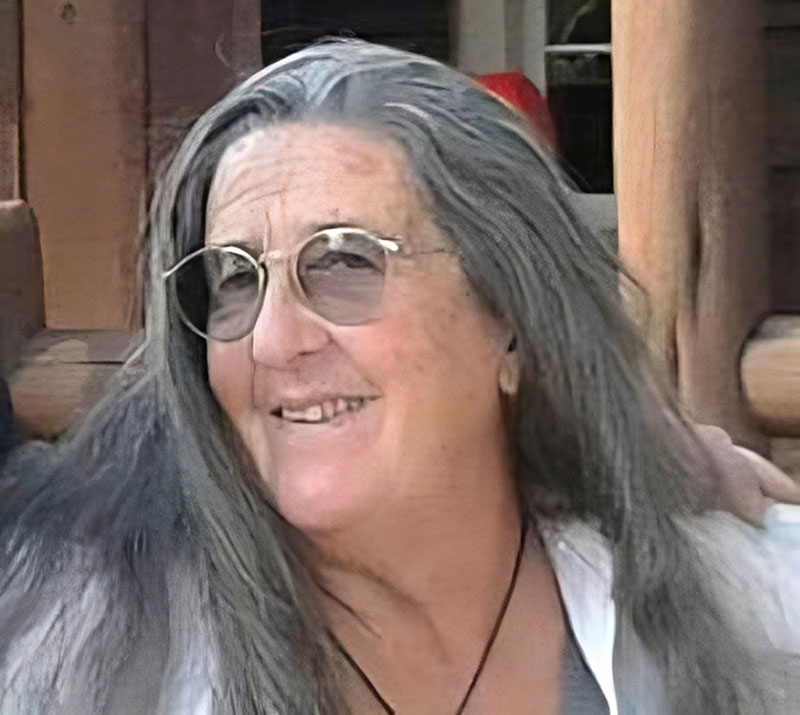
Jim Newcomb of Warren inherited the South Fork portion of the route in 1974 and shortly thereafter obtained Fogg’s route, linking the two together. Newcomb flew a Piper PA-12 in the winter from Warren. Once the mail was picked up in McCall he stopped at two private airstrips on the South Fork—the South Fork and McClain ranches—air-dropped mail at the Fritser Ranch, and then returned to Warren. The downside to his operation was that he had only straight skis, so he often had to make two separate flights on mail days from McCall, one with skis and one with wheels, because the bottom of the South Fork Canyon regularly lacked snow. In 1981, Mike bought Newcomb’s business, which included the mail route. During the summer, the route was driven by several of Mike’s employees, including Marquita Blanton of McCall, who drove it regularly for thirty years. Mike describes her as, “The best employee I’ve ever had.” Anyone in the vicinity of the route came to recognize Marquita as an integral part of the business and an icon of the back roads.
Mike improved the efficiency of Newcomb’s old route by using hydraulic wheel skis, which allow the wheels to rise above the skis when hydraulically lifted with a hand pump in the cockpit. When the skis are lowered, they drop below the surface of the wheels. The tailwheel ski is always in a fixed position, with the wheel down. This proved to be pivotal in cutting the route from a full day (weather depending) to an average of less than two hours. These skis permit Mike to take off with the wheels on a hard-surface runway, such as McCall, lower the skis for landing on snow in Warren, and then lift the skis en route to lower elevations on the South Fork where there is little to no snow and the wheels can be used. The drop in elevation from Warren to the South Fork is one of the reasons it’s difficult to cover the entire route with a modern snowmobile or utility terrain vehicle (UTV) on tracks, because the transition of the snowline means a person must walk or have another vehicle stashed—and where to stash another vehicle is tough to determine, because the snowline keeps moving.
Mike’s retirement from the route was driven by several factors, which included the discontinuation of the Warren Post Office in 2020 and rising aircraft operational costs. Historically, the increasing costs were offset by hauling freight to customers, such as the restaurant/bar in Warren. However, over the last decade these large freight customers have turned to the advanced technology of snowmobiles and UTVs that now can haul as much weight as Mike can fly in his ski-equipped Cessna 185, let alone his smaller Cessna.
The three of us load ourselves back into the airplane and as the engine runs, Mike and Katie walk each other through the process of turning the aircraft around, one of the many intricacies of ski flying. She does it flawlessly: she pulls one ski up with the hand pump, applying a lot of power to pivot the bird around, reduces power, and then drops the ski back down. Our takeoff is perfect and Katie goes back to counting handle strokes as she retracts the skis. At this point, the weather has not lifted as forecasted and a low cloud ceiling forces Katie to hug terrain along the eastern side of the valley as she looks for an opening in the clouds to make the descent into the South Fork of the Salmon River Canyon for the next two stops, South Fork Ranch and McClain Ranch.
As we travel south from Warren, the plane is nosed up near a stack of heavy clouds. Mike discusses the importance of always leaving yourself plenty of room for an “out” if the path you’ve chosen doesn’t prove to be viable. In common terms, this means you give yourself enough space to make a reasonable turn away from the rising terrain to an area that is clear of obstacles with good forward visibility. Katie pushes the plane toward where she wants to cross a ridge adjacent to China Mountain and, sure enough, the clouds break, which gives her plenty of clearance between the ridge and the clouds above to head downstream to the South Fork Ranch.
We hum along, following the river, and rays of sunshine streak downward through the clouds in continuous columns to the rugged canyon and icy river. Words can do no justice to this sight. Mike’s voice on the intercom interrupts my concentration on the passing scenery as he and Katie discuss the nuances of landing at the South Fork Ranch, a difficult strip that Katie handles well. We wait a few minutes next to the airplane until the ranch manager, Wes Gregory, and his partner Aubrey arrive in a UTV. Friendly greetings are exchanged and to show their gratitude, the two present Mike with a carrot cake fresh out of the oven of the wood cook stove—hence their slight tardiness. Mike grins, and plenty of laughs go back and forth before we return to the air.
For this next leg of the route, Mike is in the driver’s seat on the left, because the last stop, the McClain Ranch, can be a very challenging place to land. The runway is only twelve hundred feet long, with a dogleg on a five- to seven-percent slope. Mike notes he has never bent any metal there but more than once the airplane has slid sideways after he landed and tried to come to a stop on the slick runway, which he anticipates will be its condition today.
In the plane’s cabin, the contentment Katie and I feel is palpable. The flight time from South Fork Ranch to the McClain Ranch is short, maybe five minutes, but it’s long enough for Katie to do some sightseeing. Mike is so seasoned behind the controls that I never really feel the phases of a routine flight on a short hop such as this one, and before I realize it he has everything configured for landing. Just when the plane is over the airstrip, Katie points out a sizable herd of elk bedded down directly in front of us on a low saddle where Mike likes to start an arching left turn to his final approach.
“Oh, those elk always like to wait for me on mail day,” he says. As we sail through the saddle, he adds, “I hope I didn’t scatter them.” I contort my head backward to look through the side window opposite from where I’m sitting and confirm that they are lazing there just as though nothing had happened. During our idle talk about wildlife, Mike performs a perfect landing for an audience at the top of the runway who document his last mail run with their camera phones.
A scene unfolds similar to the one at Warren. Mike hands out mail and tries to answer questions about the future of the service. One of the many men in the crowd around the airplane is Mike’s brother Pat, who retired to a cabin on the river. Pat appears more sentimental than most, and understandably so, for he helped Mike to fly the route for two winters in the early 1990s and likely feels the passing of an era with this last flight even more strongly than the others.
The plane is emptied of mail for the final time. We bid farewell to the McClain Ranch residents and take off for home. Katie is back in the left-hand seat, and Mike and I visit with one another as she dodges more of the day’s low ceilings and scattered clouds. The ever-humble Mike is not a storyteller, especially when it comes to his own accomplishments, but on the flight home he does reminisce about flying the mail.
In his nearly forty-five years of flying and tens of thousands of hours of flight time in the Idaho backcountry, Mike estimates he has flown two thousand hours on the mail route. For the first ten years, he flew the route once a week during the winter and for the remaining years it was twice per week year-round. Good backcountry pilots know their own personal thresholds of flying skills, which includes their tolerances of wind, forward visibility, risk, operations at short airstrips, aircraft performance, aircraft weight, and so forth. But when one enters the realm of commercial aviation, the complexities begin to multiply. In addition to the need for good decision-making and knowledge of mountain and canyon commercial operations, throw in the complications associated with winter flying, and then strap on a pair of skis to an airplane. The only way Mike Dorris has survived decades of this type of tough flying is by having mastered his profession.
Over the years, bad weather and crummy snow conditions have dealt him the most challenging hands imaginable. He’s only half-joking when he says, “You never know, you just jump out there look around and see what is possible. Never over-commit and always leave an out. On good days I’ve flown the route in as little as 1.1 hours on the tach [the tachometer measures hours of wear and tear on the engine] and other days [because of weather] I’ve put more than 2.5 hours on the tach.”
During his forty-plus years, there were days he never even hopped in the airplane, days he never made it beyond Long Valley or Payette Lake, and lots of days he made it to a destination only to be hemmed in by weather and offered a night’s stay at a customer’s cabin. For many years, his way out when weather plugged up the canyons and mountain passes to McCall or to an alternative landing site was to tuck tail and follow the main Salmon River downstream as far as the Slate Creek airstrip along US Highway 95, just south of White Bird Hill. There he kept an old station wagon with a couple of full five-gallon gas cans, which provided him with the choice to refuel and wait out the weather or drive home and retrieve the airplane another day. One winter the car sat at Slate Creek long enough that the state patrol thought the vehicle was abandoned and impounded it in Cottonwood, forty miles to the north.
Two facts help to illustrate the challenges of commercially operating ski-equipped aircraft in the Idaho backcountry: over the last thirty years, Mike has been one of just three operators and in the last ten years, he has been the only consistent one. He chuckles about flying with skis: “It used to be romantic and then one day I woke up and I said, ‘This is getting to be a lot of work.’” Skis are difficult from a mechanical standpoint, especially when trying to turn the airplane around in deep snow. Also, the weight of the skis cuts into the aircraft’s payload, which means additional trips are often required, and they increase operating costs. When an aircraft uses skis, its takeoff distances are typically increased by ten percent to fifteen percent. The brakes don’t work when the skis are extended and lack of grip on the ground greatly reduces rudder authority, which means the rudder is less capable of counteracting crosswinds during landing and takeoff. On top of all that, when skis take you to high elevation places with deep snow and then you get stuck, intense hand shoveling is required. Mike is known to dissuade pilots from trying skis by telling them, “It’s a good way to wreck a good airplane.” More practically, he forewarns prospective ski pilots, “It all comes down to snow conditions, snow conditions, snow conditions.”
The stops along Mike’s route have changed over the years. They used to include the Yellow Jacket Ranch and the Willey Ranch. For several years he made air drops at Burgdorf Hot Springs and at the Fritser Ranch. In late spring before the road opened over Secesh Summit, the airfield at Warren would often be clear of snow and he could shed the skis. The latest he ever flew the route in the spring was June 15.
Mike and I are still chatting about “trivia”—his synonym for random facts— as Katie enters the traffic pattern at the McCall Airport and executes a nice wheel-landing. Silence falls inside the plane as we start the long taxi from the runway back to the company hangar. This silence is broken only when Mike says, “I don’t know the right words to express
it but I must admit I’m a little melancholy. It sure was nice to have you two ride with me today.”
Not much else is said except that Katie and I both thank him for letting us tag along on such an important day in his career.
For the last four decades, the sounds or silhouettes of Mike’s ski-equipped airplanes en route to deliver the mail have been synonymous with McCall, the surrounding mountains, and the changes of seasons. Mike is by no means retiring or closing the doors of his business, but an irreplaceable void will be felt in the backcountry aviation community, and especially by the customers along his mail route.
This content is available for purchase. Please select from available options.
Purchase Only
Purchase Only

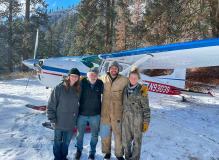
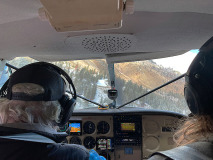
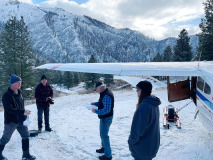
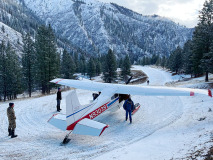
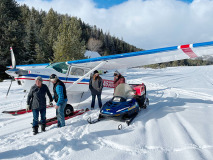
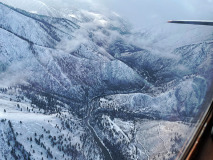
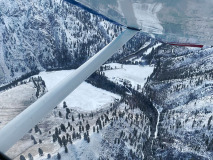
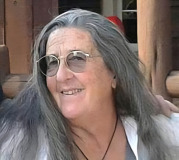
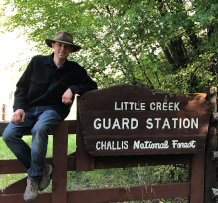
2 Responses to The Last Mail Flight
Dianna Sherman -
at
My Dad, Frank Borgeson, flew that country for many years! He flew smoke jumpers in the Ford Tri Motor for many years from McCall and Grangeville.
Jack Garnsey -
at
Great article… This brings back a lot of memories; I worked out of Salmon Idaho for five years working with ARTA running raft trips, flying into the Frank wildness area many times when we couldn’t drive to a put in site all the middle fork of the salmon.
I love this type of flying, it can be scary, but yet an adventure of lifetime,never to be forgotten. I liked it so much that my next job was working out of Iliamna Lake, Alaska, for a sport fishing lodge where we flew fisherman out daily into similar runways/wilderness. The lodges out there required a minimum of 5000 hours of flying time before they would hire you. again, those memories can be hair raising but incredibly joyful at the same time.